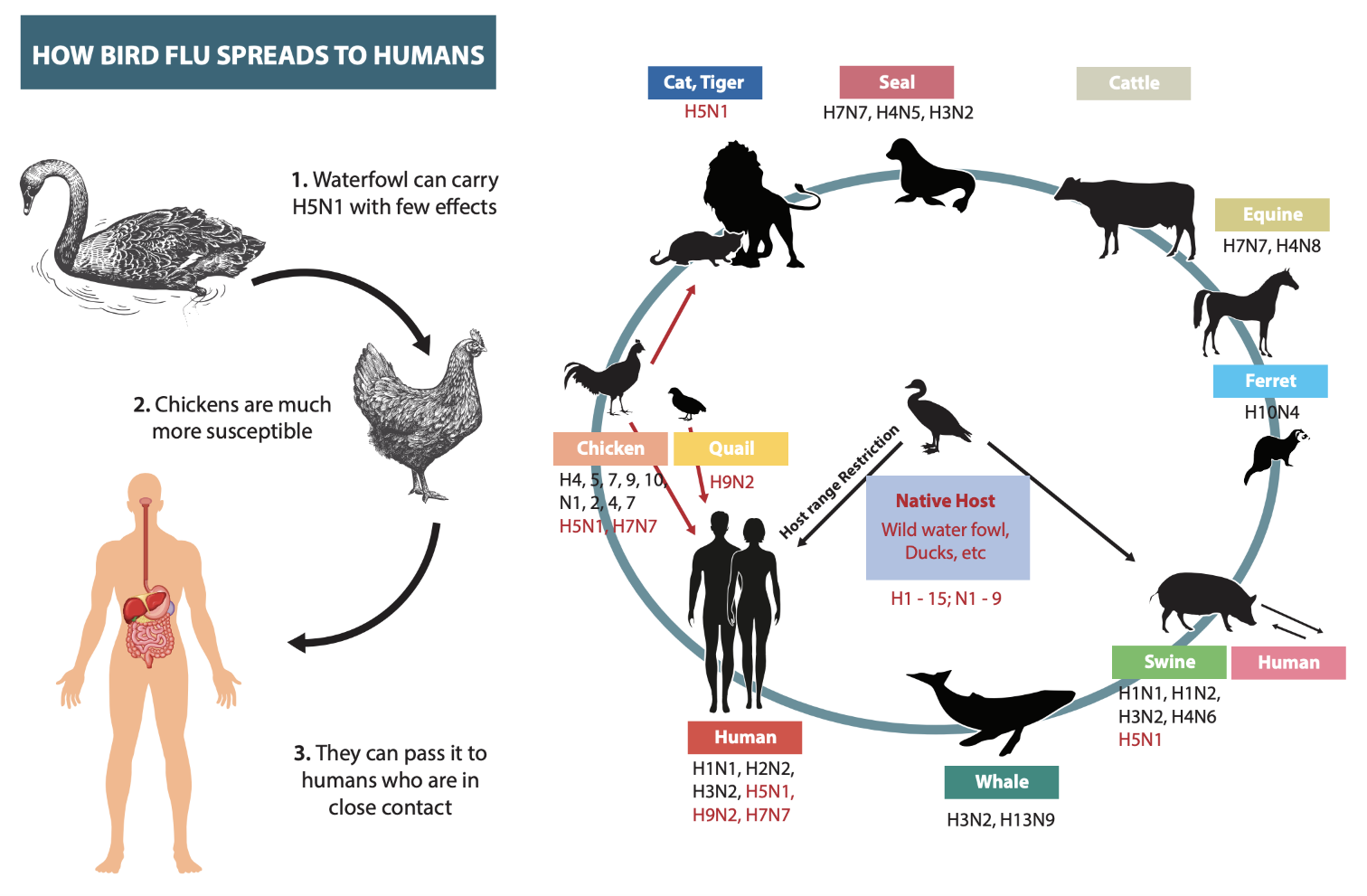7667766266
enquiry@shankarias.in
Why in News?
Recently, the researchers found that circulating the H5N1 clade virus attached better in the human respiratory tract.
Avian influenza is a zoonotic disease, meaning it can spread from animals to humans.

|
H5N1 Clade |
|
|
Clade 2.3.2.1a |
|
|
Clade 2.3.4.4b |
|
A clade, in biology, is a group of organisms that consists of a common ancestor and all of its descendants.
H5N1 in Humans
The H5N1 virus has now established its presence in 108 countries across 5 continents, impacting even endangered species like the California condor and polar bears. Alarmingly, bird flu was detected in gentoo and King penguins in Antarctica for the first time in January 2024.
References